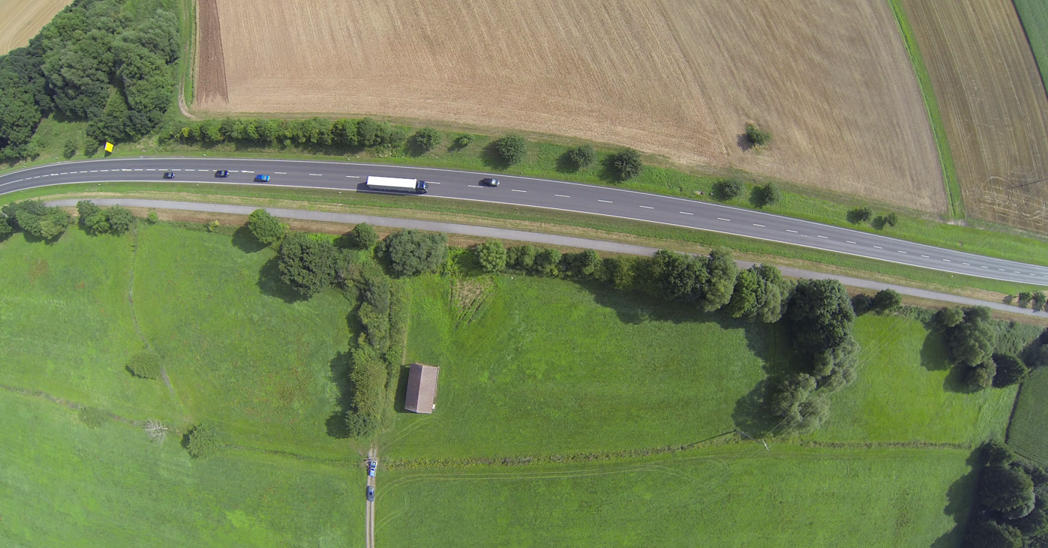Project Outline
In cooperation with the TU Dresden, Faculty of Transportation and Traffic Sciences »Friedrich List«, Chair of Road Planning and Road Design, the Fraunhofer IVI has made a contribution to increasing traffic safety. The Federal Highway Research Institute (BASt) is planning the construction of new roads all throughout Germany. In order to make overtaking maneuvers safer on these roads, sight distances, vertical curvatures and street widths must be planned accordingly. The exact figures for these values are taken from an overtaking model, which describes the overtaking behavior of an average driver. The data basis for the detection of model parameters was recorded in 1960 and is thus older than 50 years old today. Due to various developments in vehicle engineering since then, new model parameters are vitally needed. The Fraunhofer IVI and Airclip GmbH have been assigned by the BASt to record overtaking maneuvers in order to create a new data basis for the overtaking model.
To achieve this, measuring flights are undertaken to various selected overtaking spots. The overtaking maneuvers are recorded using an ultra-wide-angle camera on 800 meters on each of the roads. The camera records 15 pictures with 4096 x 2304 pixels per second, which are rectified and calibrated within an automated downstream process. In the calibrated sequences, individual vehicles can be selected, automatically followed in the video image and their movement trajectories exported. The processing of the images serves to determine both the speed and distance of the vehicles involved in the overtaking maneuver. The algorithms necessary for the processing were developed by the Fraunhofer IVI. Using this method, about 400 overtaking maneuvers have been recorded within a month. More recordings will follow in the near future.
